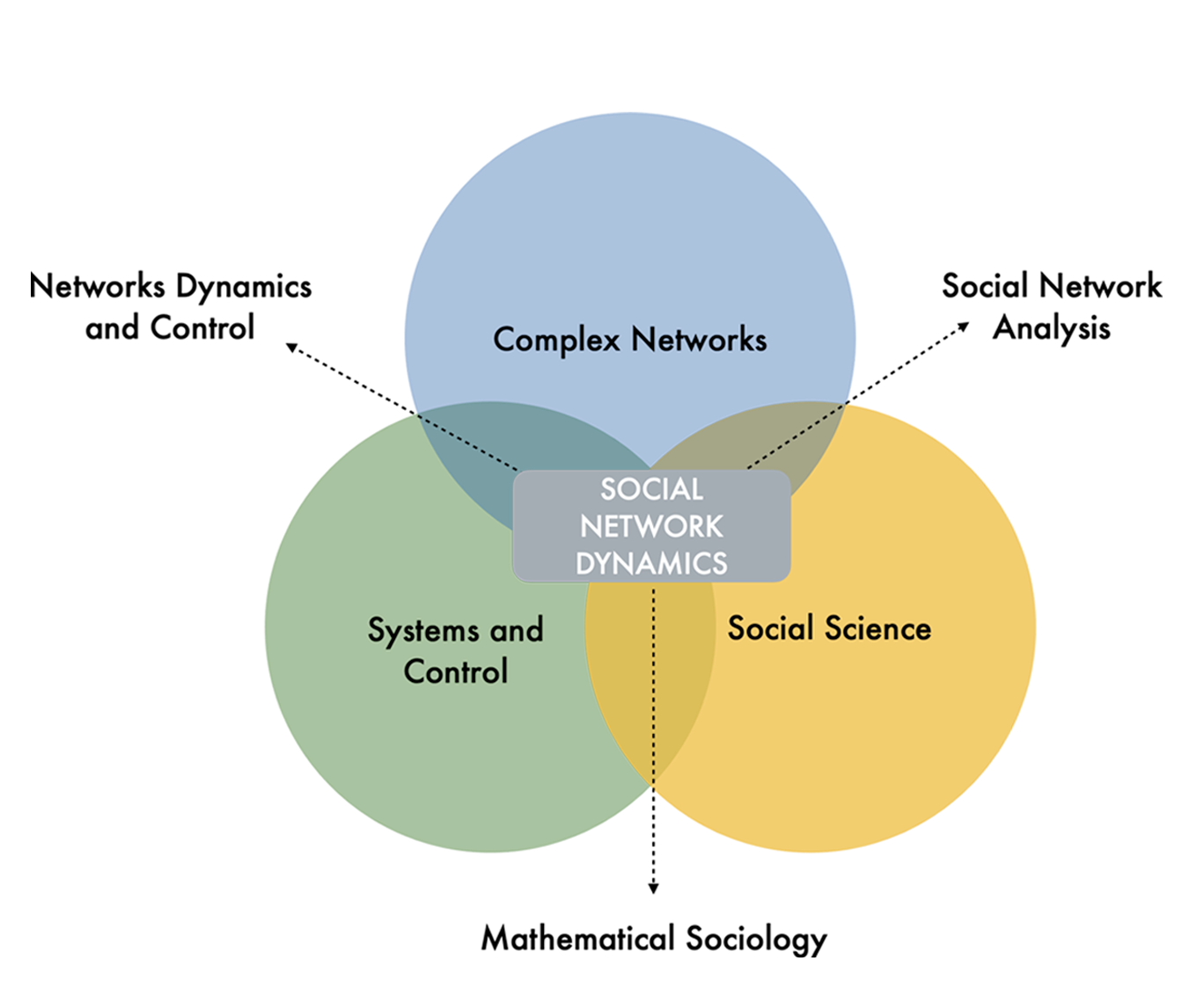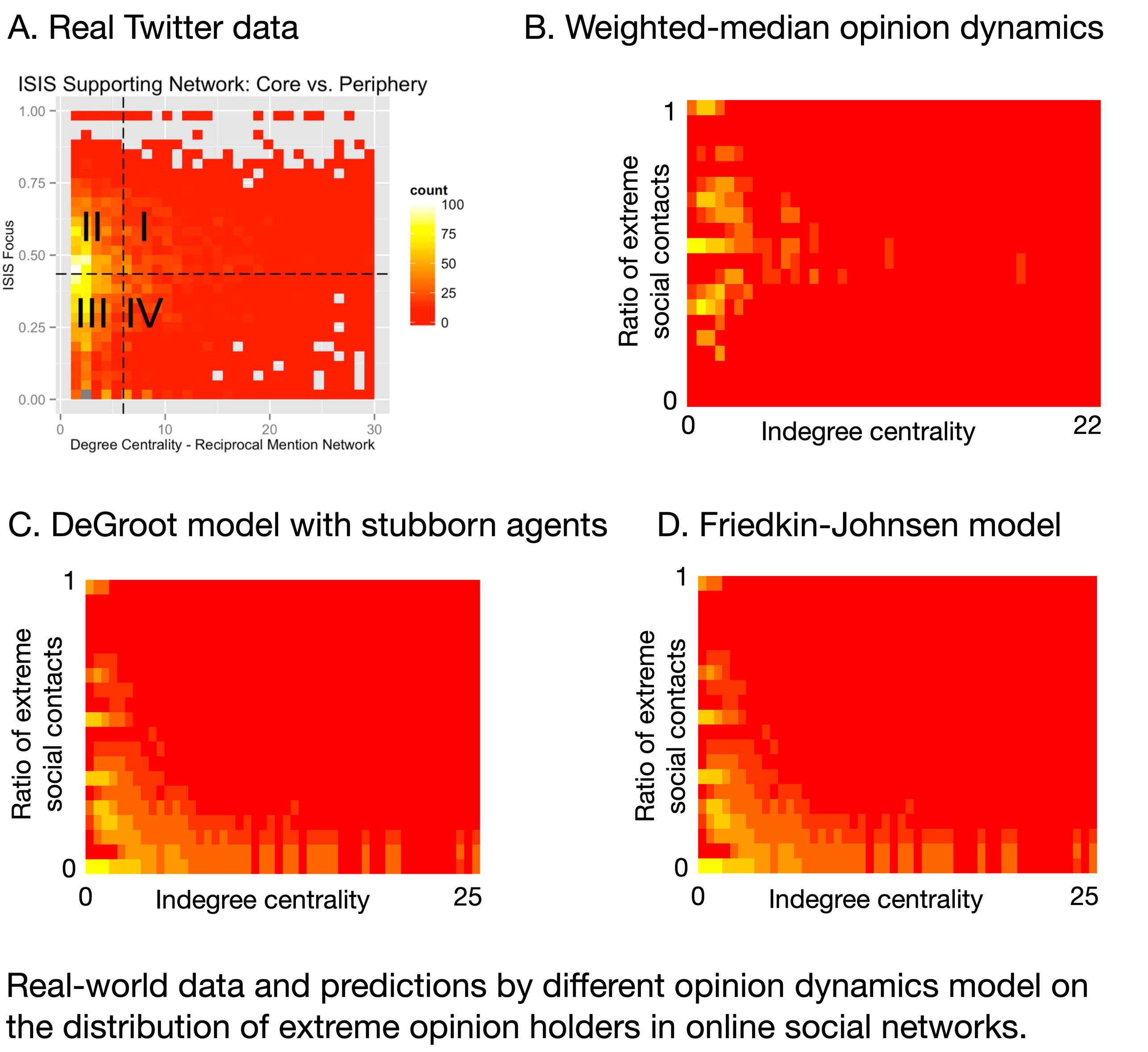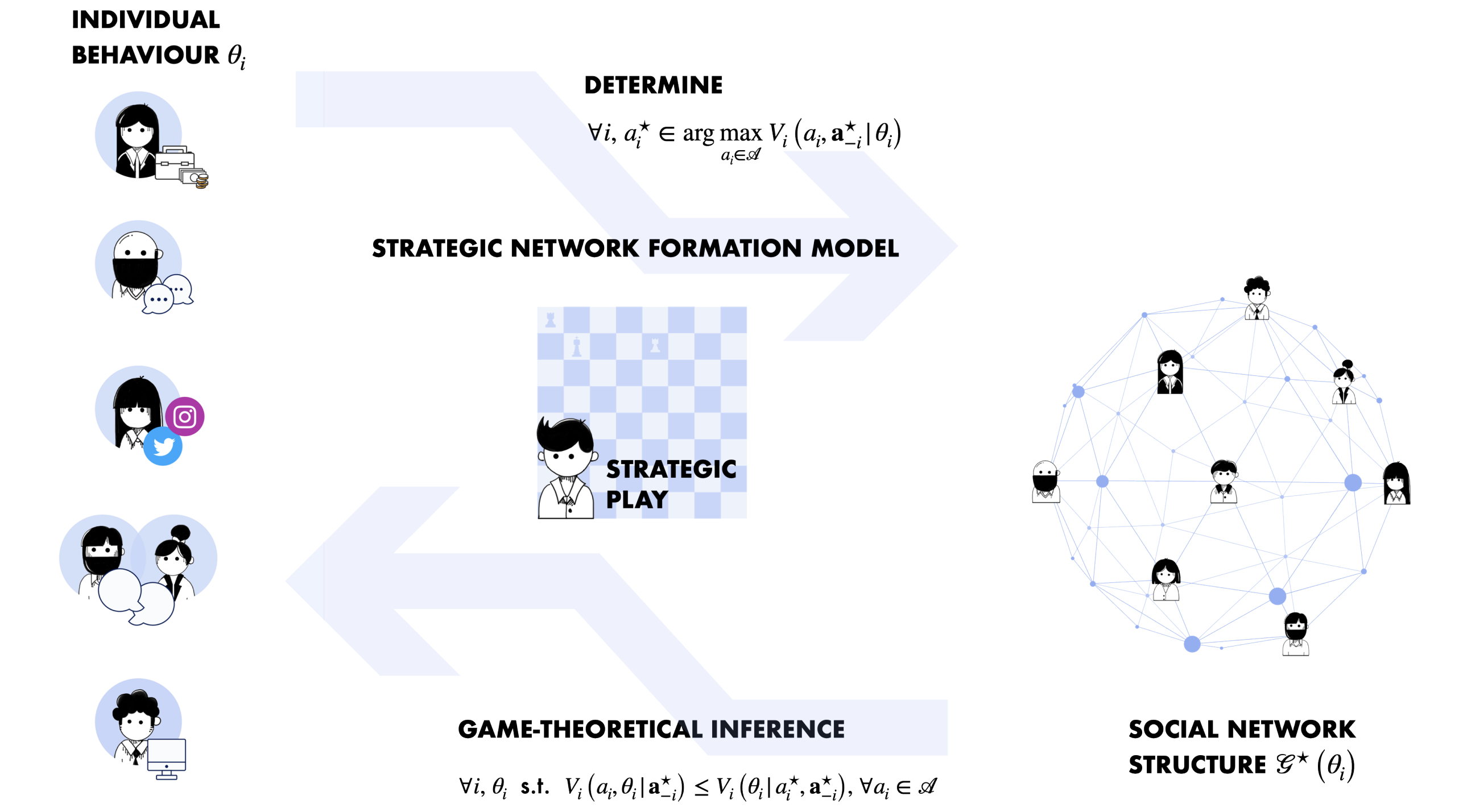Social Networks Dynamics
Social networks are complex systems, because of their scale, the lack of well-quantified local details, and the highly nonlinear and random dynamic interplay among individual states, interpersonal relations, global information, and multiple layers of networks. In the last decades, the rise of online social media provides enormous amount of empirical data, which makes quantitative studies of social systems possible, and in the meanwhile has also altered the pattern of how people interact. In this era of information revolution, our society faces unprecedented challenges with profound impacts on modern politics and economy, such as ideology polarization, echo chambers, and spreading of misinformation. These challenges in turn bring urgent practical significance to the study of social network systems.

Exploiting the progress in complex networks and data mining, the last decades have witnessed a rapid development of the research on the statistical and static features of social networks, in the framework of Social Network Analysis. However, dynamical processes on/of social networks remain to be thoroughly studied. As an important theoretic framework in control theory, network multi-agent systems provide powerful mathematical tools, e.g., matrix analysis, graph theory, dynamical systems, and stochastic processes, for quantifiable and predictable research on dynamical processes in social network systems. The fields of social network dynamics and control theory are on parallel mutually-beneficial paths. As mentioned above, numerous complex social network structures and processes can be fruitfully studied adopting the combined theories of networks, dynamical systems and control. On the other hand, better understanding of human behavior is of direct and critical importance in the study of some engineering systems, such as the cyber-physical-human systems, which consists of computers, cyber-physical devices, and people, communicating to each other.
Research
Dynamics on Networks
Dynamical processes on social networks are extensively studied by researchers from different backgrounds. In control community, researchers mainly study two classes of processes: opinion dynamics and network propagation models. Nowadays public opinion formation faces unprecedented challenges such as opinion radicalization, echo chambers, and opinion manipulations. Realistic and predictive mathematical models play a fundamental role in obtaining reliable understanding of the mechanisms behind empirically observed opinion formation processes. Since interpersonal influences are highly complicated involving various cognitive and socio-psychological mechanisms,
the key challenge in building predictive and tractable quantitative models of opinion dynamics is to identify the “salient features” that govern how individuals’ opinions are influenced by each other, i.e., the micro-foundation of opinion dynamics. In [1], we point out that the weighted-averaging opinion update mechanism, widely adopted by DeGroot model and all its extensions, implies a long-overlooked but non-negligibly unrealistic implication. By resolving this unrealistic feature in the framework of cognitive dissonance theory, we propose a novel opinion dynamics model based on a weighted-median mechanism instead. Our model renovates our understanding of opinion formation processes and extends the applicability of opinion formation models to the setting of ordered multiple- choice issues, which are prevalent in modern-day public debates and elections.

Strategic Network Formation
Society is constituted by individuals and their interconnections. In mathematical language, it can be represented by a graph, or network, in which individuals are nodes, and relationships are links, or ties. Each connection is the result of a human decision process in which individuals select with whom they want to interact. In this decision process, actors might act fully or partially rationally, yet they are driven by a number of sociological and psychological factors depending on the personality: some might be more keen in gathering influence in social media, some others might prefer fostering friendships within particular communities, some might be willing to strategically use their network connections for career progresses. The social network structure, as the ensemble of individuals and their interconnections, is then the outcome of the human decision linking process. In [2], we propose a parametric model of socio-strategic network formation where actors can control their followees but not their followers, and they are endowed with a novel payoff function combining different incentives: influence, brokerage, and closure. We consider complex networks scenarios with heterogeneous and not necessarily rational actors. Using the Nash equilibrium condition we construct a statistical behavior estimation method capable to infer the individual user preferences in terms of payoff function's parameters. We apply this method to real-world data-sets and random networks models, providing evidence that our results cross-validate empirical, historical, and sociological observations, and our method offers sociological and strategic interpretation of random networks mechanisms.

Network Formation of User-Generated Content based platforms
The number of online platforms where users create relationships and form social networks is rapidly increasing. The most popular ones (with more than a billion monthly active users), e.g., Instagram, Youtube, or TikTok, allow all users, from Hollywood celebrities to normal people, to share User-Generated Content (UGC), typically in visual form, images or videos. Despite the interdisciplinary effort in modelling and analyzing the process of social network formation, scarce attention has been devoted to the different type and quality of the UGC as a leading mechanism. Given the large impact on social media marketing strategies as well as the spreading potential of these highly influential nodes, it is important to understand (i) how such nodes emerge and (ii) what are the properties of the resulting network structure. Motivated by the above considerations, in [3] we develop a quality-based network formation model to study the underlying dynamics of individuals in networks, assuming they control their ties in order to maximize the quality of the information (UGC) they receive.

Publications
[1] W. Mei, F. Bullo, G. Chen, J. Hendrickx, and F. Dörfler. external page Rethinking the Micro- Foundation of Opinion Dynamics: Rich Consequences of an Inconspicuous Change. Under review by Physical Review X.
[2] N. Pagan, F. Dörfler. external page Game theoretical inference of human behavior in social networks. Nature communications 10.1 (2019): 1-12.
[3] N. Pagan, W. Mei, L. Cheng, F. Dörfler. A meritocratic network formation model for the rise of social media influencers. Working paper.
Presentations
• Wenjun Mei, Download “Rethinking the Micro-Foundation of Opinion Dynamics" (PDF, 1.7 MB), presentation at Intelligent Control Seminar, Peking University, May 2020.
• Nicolò Pagan, Download “Game theoretical inference of human behavior in social networks" (PDF, 16 MB), Autonomy Talk, IDSC ETH Zürich, September 2020.